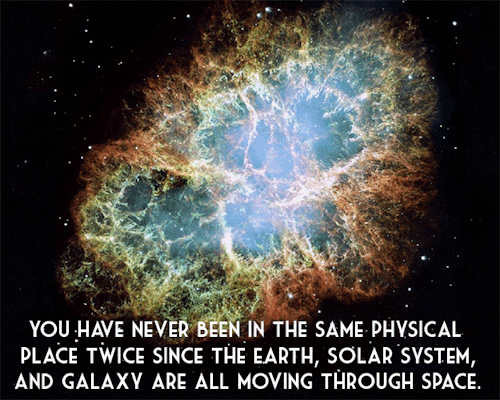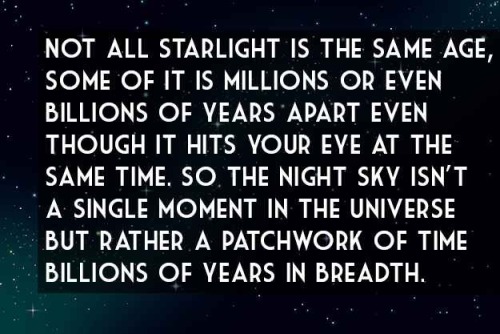MBTI Studying Tips - Part 1
MBTI Studying Tips - Part 1
DISCLAIMERS:
What I did do: Collect information and organize them into an easy-to-read-and-understand-post. What I didn’t do: Write most of it. Most of the information here isn’t my own writing, but rather useful tips I found from various sources. Credit is given at the bottom of the post.
I wrote most of this by doing a hell lot of research online and trying to ask my friends of different types irl what they thought of it. I am no professional, and my words in no way should be taken as gospel. Please, please send me corrections or your thoughts if anything I wrote was inaccurate, I will appreciate all the feedback I can get.
Hello hello! Your old friend Skye is here with some tips for studying based on your MBTI personality type. Now before we jump straight into things, let’s answer a few basic questions:
What is MBTI?
MBTI stands for the Myers-Briggs Type Indicator, which is basically a personality test that classifies you into one of 16 different personality categories based on a four-letter code. This is what the “INFP” or “ESFJ” codes mean if you’ve been seeing them around in the community. The test assesses you on four of your main traits:
How do you prefer to direct your energy? (I vs E)
What kind of information do you prefer to gather? (S vs N)
What criteria do you prefer for making decisions? (T vs F)
What kind of environment do you prefer? (J vs P)
So how do I find out what’s my type?
You can take a free online quiz here!
Okay, but what’s with the ‘Introverted Thinking’ and ‘Fi’ and all the fancy terms?
You can read more about Cognitive Function Theory here! I will be basing my post off this theory because I think it’s a more comprehensive method of understanding MBTI.
Onwards! (The rest is under the cut bc skye rambled and it’s long af even tho I’m just covering the introverted functions)
Keep reading
More Posts from Study-astronomy-biology-ref and Others









9 things to seriously make you re-consider the entire existence of mankind
Source: buzzfeed.com
Stellar Outburst Brings Water Snow Line Into View
ESO - European Southern Observatory logo. 13 July 2016
Artist’s impression of the water snowline around the young star V883 Orionis
The Atacama Large Millimeter/submillimeter Array (ALMA) has made the first ever resolved observation of a water snow line within a protoplanetary disc. This line marks where the temperature in the disc surrounding a young star drops sufficiently low for snow to form. A dramatic increase in the brightness of the young star V883 Orionis flash heated the inner portion of the disc, pushing the water snow line out to a far greater distance than is normal for a protostar, and making it possible to observe it for the first time. The results are published in the journal Nature on 14 July 2016.
ALMA image of the protoplanetary disc around V883 Orionis
Young stars are often surrounded by dense, rotating discs of gas and dust, known as protoplanetary discs, from which planets are born. The heat from a typical young solar-type star means that the water within a protoplanetary disc is gaseous up to distances of around 3 au from the star [1] — less than 3 times the average distance between the Earth and the Sun — or around 450 million kilometres [2]. Further out, due to the extremely low pressure, the water molecules transition directly from a gaseous state to form a patina of ice on dust grains and other particles. The region in the protoplanetary disc where water transitions between the gas and solid phases is known as the water snow line [3].
The star V883 Orionis in the constellation of Orion
But the star V883 Orionis is unusual. A dramatic increase in its brightness has pushed the water snow line out to a distance of around 40 au (about 6 billion kilometres or roughly the size of the orbit of the dwarf planet Pluto in our Solar System). This huge increase, combined with the resolution of ALMA at long baselines [4], has allowed a team led by Lucas Cieza (Millennium ALMA Disk Nucleus and Universidad Diego Portales, Santiago, Chile) to make the first ever resolved observations of a water snow line in a protoplanetary disc.
Shifting water snowline in V883 Orionis
The sudden brightening that V883 Orionis experienced is an example of what occurs when large amounts of material from the disc surrounding a young star fall onto its surface. V883 Orionis is only 30% more massive than the Sun, but thanks to the outburst it is experiencing, it is currently a staggering 400 times more luminous — and much hotter [5].
ALMA image of the protoplanetary disc around V883 Orionis (annotated)
Lead author Lucas Cieza explains: “The ALMA observations came as a surprise to us. Our observations were designed to look for disc fragmentation leading to planet formation. We saw none of that; instead, we found what looks like a ring at 40 au. This illustrates well the transformational power of ALMA, which delivers exciting results even if they are not the ones we were looking for.”
ALMA image of the protoplanetary disc around V883 Orionis
The bizarre idea of snow orbiting in space is fundamental to planet formation. The presence of water ice regulates the efficiency of the coagulation of dust grains — the first step in planet formation. Within the snow line, where water is vapourised, smaller, rocky planets like our own are believed to form. Outside the water snow line, the presence of water ice allows the rapid formation of cosmic snowballs, which eventually go on to form massive gaseous planets such as Jupiter.
Zooming on the protoplanetary disc around V883 Orionis
The discovery that these outbursts may blast the water snow line to about 10 times its typical radius is very significant for the development of good planetary formation models. Such outbursts are believed to be a stage in the evolution of most planetary systems, so this may be the first observation of a common occurrence. In that case, this observation from ALMA could contribute significantly to a better understanding of how planets throughout the Universe formed and evolved.
The protoplanetary disc around V883 Orionis (artist’s impression)
Notes: [1] 1 au, or one astronomical unit, is the mean distance between the Earth and the Sun, around 149.6 million kilometres.This unit is typically used to describe distances measured within the Solar System and planetary systems around other stars. [2] This line was between the orbits of Mars and Jupiter during the formation of the Solar System, hence the rocky planets Mercury, Venus, Earth and Mars formed within the line, and the gaseous planets Jupiter, Saturn, Uranus and Neptune formed outside. [3] The snow lines for other molecules, such as carbon monoxide and methane, have been observed previously with ALMA, at distances of greater than 30 au from the protostar within other protoplanetary discs. Water freezes at a relatively high temperature and this means that the water snow line is usually much too close to the protostar to observe directly. [4] Resolution is the ability to discern that objects are separate. To the human eye, several bright torches at a distance would seem like a single glowing spot, and only at closer quarters would each torch be distinguishable. The same principle applies to telescopes, and these new observations have exploited the exquisite resolution of ALMA in its long baseline modes. The resolution of ALMA at the distance of V883 Orionis is about 12 au — enough to resolve the water snow line at 40 au in this outbursting system, but not for a typical young star. [5] Stars like V883 Orionis are classed as FU Orionis stars, after the original star that was found to have this behaviour. The outbursts may last for hundreds of years. More information: This research was presented in a paper entitled “Imaging the water snow-line during a protostellar outburst”, by L. Cieza et al., to appear in Nature on 14 July 2016. The team is composed of Lucas A. Cieza (Millennium ALMA Disk Nucleus; Universidad Diego Portales, Santiago, Chile), Simon Casassus (Universidad de Chile, Santiago, Chile), John Tobin (Leiden Observatory, Leiden University, The Netherlands), Steven Bos (Leiden Observatory, Leiden University, The Netherlands), Jonathan P. Williams (University of Hawaii at Manoa, Honolulu, Hawai`i, USA), Sebastian Perez (Universidad de Chile, Santiago, Chile), Zhaohuan Zhu (Princeton University, Princeton, New Jersey, USA), Claudio Cáceres (Universidad Valparaiso, Valparaiso, Chile), Hector Canovas (Universidad Valparaiso, Valparaiso, Chile), Michael M. Dunham (Harvard-Smithsonian Center for Astrophysics, Cambridge, Massachusetts, USA), Antonio Hales (Joint ALMA Observatory, Santiago, Chile), Jose L. Prieto (Universidad Diego Portales, Santiago, Chile), David A. Principe (Universidad Diego Portales, Santiago, Chile), Matthias R. Schreiber (Universidad Valparaiso, Valparaiso, Chile), Dary Ruiz-Rodriguez (Australian National University, Mount Stromlo Observatory, Canberra, Australia) and Alice Zurlo (Universidad Diego Portales & Universidad de Chile, Santiago, Chile). The Atacama Large Millimeter/submillimeter Array (ALMA), an international astronomy facility, is a partnership of ESO, the U.S. National Science Foundation (NSF) and the National Institutes of Natural Sciences (NINS) of Japan in cooperation with the Republic of Chile. ALMA is funded by ESO on behalf of its Member States, by NSF in cooperation with the National Research Council of Canada (NRC) and the National Science Council of Taiwan (NSC) and by NINS in cooperation with the Academia Sinica (AS) in Taiwan and the Korea Astronomy and Space Science Institute (KASI). ALMA construction and operations are led by ESO on behalf of its Member States; by the National Radio Astronomy Observatory (NRAO), managed by Associated Universities, Inc. (AUI), on behalf of North America; and by the National Astronomical Observatory of Japan (NAOJ) on behalf of East Asia. The Joint ALMA Observatory (JAO) provides the unified leadership and management of the construction, commissioning and operation of ALMA. ESO is the foremost intergovernmental astronomy organisation in Europe and the world’s most productive ground-based astronomical observatory by far. It is supported by 16 countries: Austria, Belgium, Brazil, the Czech Republic, Denmark, France, Finland, Germany, Italy, the Netherlands, Poland, Portugal, Spain, Sweden, Switzerland and the United Kingdom, along with the host state of Chile. ESO carries out an ambitious programme focused on the design, construction and operation of powerful ground-based observing facilities enabling astronomers to make important scientific discoveries. ESO also plays a leading role in promoting and organising cooperation in astronomical research. ESO operates three unique world-class observing sites in Chile: La Silla, Paranal and Chajnantor. At Paranal, ESO operates the Very Large Telescope, the world’s most advanced visible-light astronomical observatory and two survey telescopes. VISTA works in the infrared and is the world’s largest survey telescope and the VLT Survey Telescope is the largest telescope designed to exclusively survey the skies in visible light. ESO is a major partner in ALMA, the largest astronomical project in existence. And on Cerro Armazones, close to Paranal, ESO is building the 39-metre European Extremely Large Telescope, the E-ELT, which will become “the world’s biggest eye on the sky”. Links: Research paper: http://www.eso.org/public/archives/releases/sciencepapers/eso1626/eso1626a.pdf Photos of ALMA: http://www.eso.org/public/images/archive/search/?adv=&subject_name=Atacama%20Large%20Millimeter/submillimeter%20Array For more information about ALMA, visit: https://www.eso.org/sci/facilities/alma.html Images, Text, Credits: ESO/Richard Hook/A. Angelich (NRAO/AUI/NSF)/ALMA (ESO/NAOJ/NRAO)/ALMA//L. Cieza/IAU and Sky & Telescope/Videos: ALMA (ESO/NAOJ/NRAO)/L. Cieza./ESO/Digitized Sky Survey 2/N. Risinger (skysurvey.org)/M. Kornmesser. Music: Johan B. Monell. Best regards, Orbiter.ch Full article
How To Help Your Anxious Partner — And Yourself
Living with anxiety can be tough — your thoughts might race, you might dread tasks others find simple (like driving to work) and your worries might feel inescapable. But loving someone with anxiety can be hard too. You might feel powerless to help or overwhelmed by how your partner’s feelings affect your daily life.
If so, you’re not alone: Multiple studies have shown that anxiety disorders may contribute to marital dissatisfaction.
“We often find that our patients’ … partners are somehow intertwined in their anxiety,” says Sandy Capaldi, associate director at the Center for the Treatment and Study of Anxiety at the University of Pennsylvania.
Anxiety is experienced at many different levels and in different forms — from moderate to debilitating, from generalized anxiety to phobias — and its impacts can vary. But psychiatrists and therapists say there are ways to help your partner navigate challenges while you also take care of yourself.
Read the full story here

How do you observe that the Universe is expanding?
In 2011, the Nobel Prize in Physics was awarded to Saul Perlmutter, Brian Schmidt and Adam Riess for discovering that the Universe is expanding at an accelerating rate. We’d known for a while that the Universe has been expanding ever since its birth - but we didn’t know whether the expansion was slowing down, staying the same, or speeding up.
So, how exactly do you discover something like this?
Perlmutter, Schmidt, and Riess did it by observing a special type of supernovae: Type Ia supernovae. Supernovae are the explosive deaths of large stars, and they usually occur when a star runs out of fuel and collapses under its own weight, generating a shockwave that blasts its material out into space. However, this only happens when a star is big enough - the initial star has to have a critical, threshold mass, called the Chandrasekhar limit. Our sun, for example, won’t go supernova because the Chandrasekhar limit happens to be around 1.4 solar masses. When it runs out of fuel, our sun will instead gently blow off its outer layers and quietly become a dense core of carbon and oxygen, called a white dwarf.
But here’s the kicker: not all white dwarfs stay white dwarfs.
Some white dwarfs exist as one half of a binary system, where two stars orbit each other in a perpetual celestial dance. In some situations, the white dwarfs can actually “steal” matter from their partner star, siphoning it off and guzzling it up to grow more and more massive. Eventually, when their mass hits the Chandrasekhar limit, the white dwarf is ripped apart in a supernova.

Image Credit
This happens in binary systems all across the Universe, and because these white dwarfs all go supernova at exactly the same mass, this means we know exactly how bright the supernovae are. When they’re observed through telescopes, some look brighter and some look fainter depending on their distance - but because we know their actual intrinsic brightness, we can work out how far away they really are. (You could do this yourself using a more earthly standard candle.) For this reason, Type Ia supernovae are called “standard candles”.
In their observations, Perlmutter, Schmidt, and Riess realised that far away supernovae were more redshifted than the supernovae close by. “Redshift” is essentially a measure of how much the Universe has expanded since the light left the supernovae, so by comparing the distance and the redshift of the supernovae, they could create an “expansion history” of the Universe.
This showed pretty clearly that the universe isn’t just expanding, it’s accelerating - i..e, everything’s flying apart more quickly than it was yesterday, or a century, or a billion years ago. Why? Dark energy.
What is a "nebula"?
A nebula is a large cloud of dust and gas that are star-forming regions. They’re formed when a star dies and its outer layers expand, creating a colourful cloud of gas. In other cases, they’re formed when a star goes supernova (when a really big and bright star dies and explodes).
There are emission nebulae, reflection nebulae and dark nebulae. Emission nebulae are close enough to a star that the gas particles absorb the UV light, get excited and emit their own light. Reflection nebulae are when a nebulae isn’t close enough to a star to absorb it’s UV light so it just reflects it. Dark nebulae aren’t close enough to a star to either absorb it’s light nor reflect it. The only way a dark nebulae is visible is if there’s a star behind it that can act as a backdrop, illuminating the back of the nebulae.









On October 8 a privileged few could see auroras in abnormally low latitudes, as the spectacular pictures above taken in Wales and Northern England.
Via TON: Northern Lights Put On Spectacular Show As Aurora Borealis Lit Skies Over Wales And Yorkshire.
-
 theaterm liked this · 2 years ago
theaterm liked this · 2 years ago -
 gigiraffestudies liked this · 3 years ago
gigiraffestudies liked this · 3 years ago -
 nbenkidu reblogged this · 5 years ago
nbenkidu reblogged this · 5 years ago -
 lolcollegeblr liked this · 5 years ago
lolcollegeblr liked this · 5 years ago -
 itstimetostudyforyourlife-blog liked this · 5 years ago
itstimetostudyforyourlife-blog liked this · 5 years ago -
 soliviganttt liked this · 5 years ago
soliviganttt liked this · 5 years ago -
 lxhcxr liked this · 7 years ago
lxhcxr liked this · 7 years ago -
 proserpinastudies liked this · 7 years ago
proserpinastudies liked this · 7 years ago -
 burn-burr liked this · 7 years ago
burn-burr liked this · 7 years ago -
 dazed-angel liked this · 7 years ago
dazed-angel liked this · 7 years ago -
 marina-here liked this · 7 years ago
marina-here liked this · 7 years ago -
 sweetshoneydrop liked this · 7 years ago
sweetshoneydrop liked this · 7 years ago -
 mednical reblogged this · 7 years ago
mednical reblogged this · 7 years ago -
 baekslap reblogged this · 7 years ago
baekslap reblogged this · 7 years ago -
 girlweirwood liked this · 7 years ago
girlweirwood liked this · 7 years ago -
 coslnes liked this · 8 years ago
coslnes liked this · 8 years ago -
 mylggstruggles reblogged this · 8 years ago
mylggstruggles reblogged this · 8 years ago -
 shoyohoe reblogged this · 8 years ago
shoyohoe reblogged this · 8 years ago -
 reportcarded reblogged this · 8 years ago
reportcarded reblogged this · 8 years ago -
 pearldrop liked this · 8 years ago
pearldrop liked this · 8 years ago -
 bogsun liked this · 8 years ago
bogsun liked this · 8 years ago -
 younggold liked this · 8 years ago
younggold liked this · 8 years ago -
 pokyun liked this · 8 years ago
pokyun liked this · 8 years ago -
 dedication-to-procrastination liked this · 8 years ago
dedication-to-procrastination liked this · 8 years ago -
 phoensics-blog reblogged this · 8 years ago
phoensics-blog reblogged this · 8 years ago -
 bitchisbotched liked this · 8 years ago
bitchisbotched liked this · 8 years ago -
 dr-oliverthredson liked this · 8 years ago
dr-oliverthredson liked this · 8 years ago -
 flyinghinata reblogged this · 8 years ago
flyinghinata reblogged this · 8 years ago -
 alohamorastudies reblogged this · 8 years ago
alohamorastudies reblogged this · 8 years ago -
 verynicool liked this · 8 years ago
verynicool liked this · 8 years ago -
 doctor-coffee reblogged this · 8 years ago
doctor-coffee reblogged this · 8 years ago -
 euvphony liked this · 8 years ago
euvphony liked this · 8 years ago -
 study-owlet reblogged this · 8 years ago
study-owlet reblogged this · 8 years ago -
 ailenor liked this · 8 years ago
ailenor liked this · 8 years ago -
 lovmochi liked this · 8 years ago
lovmochi liked this · 8 years ago

This is a studyblr for everyone have some passion for science, especially astronomy and biology
129 posts


